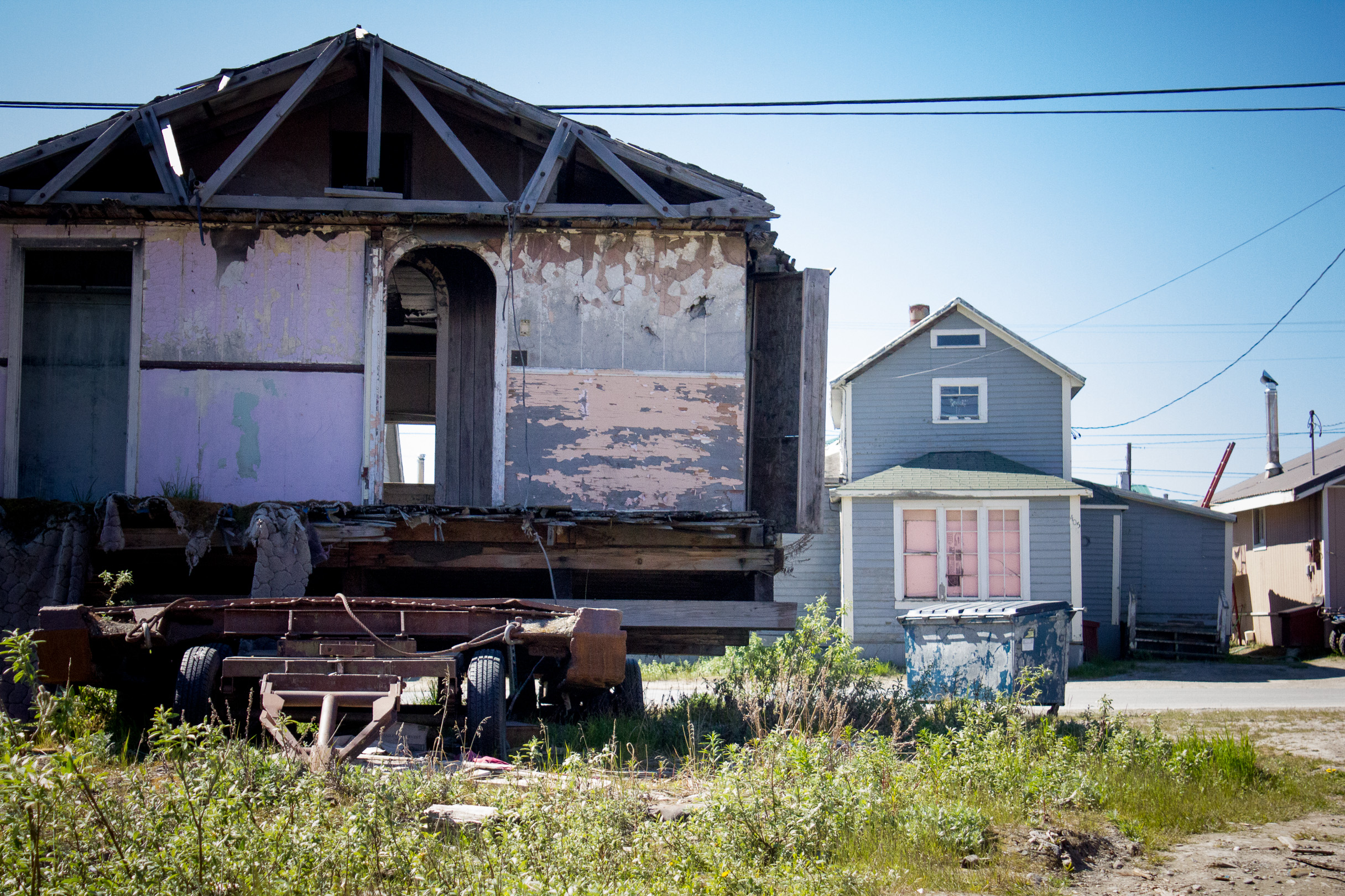A proposed “self-help” low-income housing project in Nome could be the first of its kind in rural Alaska.
The Mutual Self-Help Housing Program is sponsored by the Rural Community Action Program (RurAL CAP) in partnership with the U.S. Department of Agriculture (USDA) Rural Development. RurAL CAP helps low-income families qualify for USDA home construction and mortgage loans.
That may sound like some pretty standard bureaucracy. But here’s the unique thing about “self-help” housing: The qualifying families and individuals — usually between 15 and 20 of them — actually construct the homes themselves, combining their efforts under the guidance of a construction supervisor. And that generates what’s called “sweat equity.”
“So you’re getting paid, in a way, in terms of equity, for your time investment and your labor in the house.”
That’s Mitzi Barker. She directs the planning and construction division at RurAL CAP. At a packed open house at the Nome Eskimo Community Tuesday evening, she and a colleague gave an overview of the program.
Families and individuals are required to put in 35 hours per week in construction, though half of those can be completed by substitute volunteers. Nobody gets to move in until all the homes are complete.
For people like Mary Ruud, though, that community work requirement is a deal-breaker.
“I’ve worked with my dad’s business, Marty’s Maintenance, since I was a little girl, and I’ve helped build our own home up on Anvil Mountain. So when you have the certain construction experience where you don’t really need the contractors working with you, showing you what to do, then I just need to focus on saving up my own money to do it myself.”
However, building it with others is sort of the point. RurAL CAP feels it’s more cost-effective, for instance, to extend utility infrastructure for fifteen houses as opposed to just one. And RurAL CAP homeownership coordinator Mi’shell French was quick to point out that families aren’t just building houses…
“You’re building a community.”
Although it may seem like an utopian idea for Western Alaska, the program has had success in south-central: 70 units have been built on the Kenai Peninsula, with 50 more in the works. French says more homes on the road system isn’t the end goal, though.
“We’ve gotten this knowledge under our belts, so we know how the program needs to — you know, things that we need to do, things that might be stumbling blocks, so we’ve kind of got that out of the way. And now we’re ready to start moving into the more rural areas, which is what we really wanted to do with this program.”
There’s still plenty to figure out: Where would the homes go in Nome? How would the expense of shipping materials up be factored in? Is there a way to condense the year-long construction timeline into six months to avoid the worst of Nome’s winter? These are questions we don’t have the answers to yet.
And people who are interested have a few questions to answer as well, like: Will they qualify? Do they have a good enough credit score? Would the home be big enough for their family?
Nancy Analoak says she’d need to be sure she could commit to a long mortgage. But with five kids in a crowded home and only one firm income in the household, she says the program certainly has its appeals.
“It would be very good, it would be really good, dreaming-wise.”
If enough people like Analoak are interested and qualify with USDA, RurAL CAP says it hopes to start construction in the spring of 2019 — which doesn’t leave too much time for dreaming.
Image at top: An abandoned house in Nome’s west end. Nome and many other Western Alaska communities continue to grapple with a severe housing shortage and high rents. (Photo: Jenn Ruckel, KNOM.)





